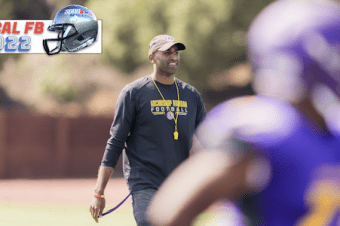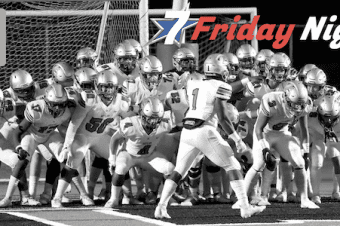Contact Sport
CalHiSports InsightsFootballHigh School Football October 21, 2013 SportStars 0
Americans love football.
It’s no surprise that athletes from the high school level on up are drawn to the game. In 2012, a whopping 4.2 million played football, including more than 1 million high school students.
But popularity comes with a price, and in the case of football, the price includes injuries.
According to the U.S. Consumer Product Safety Commission, more than 920,000 athletes received care in an emergency room or doctor’s office for football-related injuries in 2007. And for every 1,000 exposures on the field, high school football players suffered between 3.2 and 8.1 injuries.
Most injuries that occur during games happen in the third quarter. Players are more commonly injured on offense rather than defense, with running backs sustaining the most injuries, followed by lineman. Defensive backs, however, are at the highest risk for catastrophic injury.
Despite recent media attention on concussions and other brain trauma, the majority of football injuries occur in the lower extremities, with injuries to the knees reported to be as high as 36.5 percent, followed by up to 18.8 percent for ankle injuries, up to 13.3 percent for shoulder injuries, 11.8 percent for head injuries and 7.2 percent for neck injuries.
Unfortunately, the highest rates of injuries in football occur in high school athletes. The good news is that injuries and fatalities have been decreasing in recent years as the result of improved safety regulations evolved from data collected by the National Center for Catastrophic Sport Injury Research since 1931.
Head injuries, for example, have dropped dramatically since 1976, when it became illegal to make initial contact with the head and face while blocking and tackling, also called “spearing.” Spearing contributed to 36 fatalities and 30 paralysis injuries in 1968 alone. The banning of the play, coupled with advancement in helmet contact restrictions, helped reduce the number of catastrophic head and neck injuries to 13 in 2012, and five of the injured athletes eventually made a complete neurological recovery.
In 2008, the National Federation of State High School Associations mandated that any athlete who had suffered a concussion could not return to play that day and had to remain out of play until cleared by a medical professional. Since 2010, any athlete who exhibits signs of concussion must be removed immediately from the game.
Additional health concerns in football:
Heat stroke caused 133 deaths between 1960 and 2011. Thanks to increased awareness about the problem, only one case was reported in 2012.
Sickle Cell Trait has also become the focus of concern after a recent article revealed that 13 college football players died from Sickling Collapse. In the past three years, however, Division I, II and III athletes have been required to undergo Sickle Cell Trait testing, although this ruling has not yet been mandated for high school athletes.
If you are a high school athlete or the parent of one, it’s important to understand the risks of the game and to know and follow methods designed to reduce injuries.
As the football season reaches the mid-point, meet with coaches to discuss and review injury-prevention techniques, and remind athletes to look out for one another and report to an adult immediately if an injury occurs during practice or play. When an injury does occur, players should be evaluated by a qualified physician.
Teach young athletes that good football is safe football.
Selina Shah is a board-certified Sports Medicine Physician for St. Francis Memorial’s Center for Sports Medicine in Walnut Creek.
SportStars
SportStars Magazine: High School Sports Articles Online SportStars is your go-to source for the very best high school sports articles in California. Player and team profiles, game coverage, health and fitness tips and the largest Camps, Clinics & Combine resource for athletes. We're the story behind the stats.










No comments so far.
Be first to leave comment below.